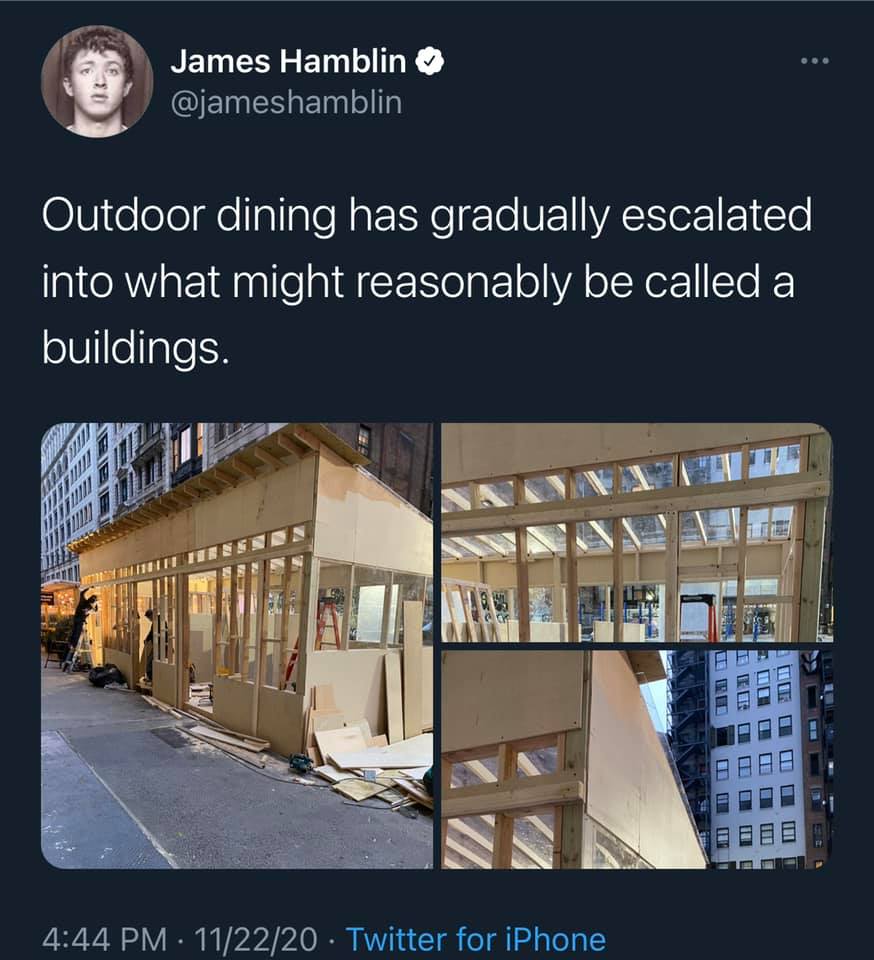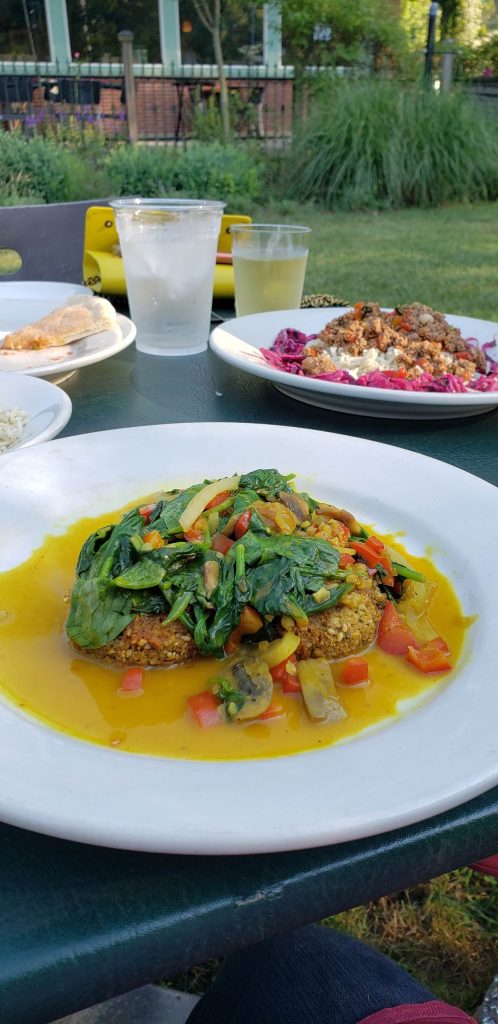Outdoor Dining? This Is A Building With Four Walls And A Roof!
To counter the high risk of contracting COVID-19, many states have mandated restaurants to either close down entirely or only offer carry-out and delivery options. To satisfy public demand for a dine-in option while still following CDC guidelines, restaurateurs have been erecting structures to provide an outdoor dining option. Dining outdoors brings to the table improved airflow, circulation of outside air, and additional space for placing tables 6 ft. apart. The dining industry hopes that these measures together will be enough to prevent the spread of COVID for patrons. However, although outdoor dining is considered less risky than eating indoors, it still involves people from different households sitting together in close quarters with their masks off.
Batch Brewing, in Detroit’s Corktown neighborhood, for example, opted in the beginning of the pandemic to close all indoor dining. They also made the decision earlier this year to convert most of their surface parking lot into usable outdoor seating. This primarily consists of a sort of open barn, built with sturdy, wood posts and a metal roof– but no walls. This allows for maximum outdoors airflow, while still sheltering diners from the elements outside.

Eastern Market Brewing Company in Detroit, where a section of Riopelle Street has been pedestrianized to encourage outdoor dining. 
Pizzaplex’s portable wood-fired oven is set up outside Eastern Market Brewing Company in Detroit, where a section of Riopelle Street has been pedestrianized to encourage outdoor dining.
However, with the advent of winter, restaurateurs have been looking into solutions to keep outdoor dining areas, well, warm! To aid the process, officials have created winterisation guides with ideas on how business owners can create more comfortable outdoor dining areas in winter, with some jurisdictions even awarding cash grants to help with the expenses involved. Just installing space heaters might have been sufficient in milder winter climates, but it would not be very effective against the biting cold Midwestern winds. Not to mention the possibility of having flimsier structures blown away by the wind! To combat windchill, some restaurants have begun to add walls to their outdoor structures and enclosing it.

So, when does outdoor dining stop being outdoor dining? Well, when it becomes indoor dining, obviously. But where do we draw that line?
Okay, so, it has walls. It has a roof. But the argument that it’s “outdoor” dining seems to be limited to the fact that it is, well, a separate structure from the building it’s affiliated with. It’s not outdoors if it’s entirely enclosed, right? In NYC, a structure needs to be at least half open to the elements to qualify as “outdoors”. Enclosing the two long sides of a narrow, rectangular structure would thus qualify it as “indoors”. In Detroit, the rules are even stricter, with only one side allowed (though it’s clear that many restaurants are not following this guideline). Fully closed-off structures, even if they’re detached from the main property, then have to follow the same guidelines for indoor dining, such as having limited seating capacities and conducting temperature checks.
Indoor Air Quality and COVID
But is dining in an enclosed “outdoor” space any different to just dining indoors? If diners wind up in completely confined spaces, the benefits of being outdoors, such increased airflow, would be lost. COVID could then spread more easily, as you are effectively sealing the virus within an enclosure, without the benefit of filtered air from ventilation systems that indoor dining areas have.
That brings us to the question of air quality. As covered earlier this year, there are various measures one can take to ensure that the air they are breathing is as clean as possible. Will air filters and UV lights prevent you from getting COVID? No, it’s not a silver bullet, by any stretch of the imagination. But it definitely can’t hurt to breathe cleaner air when you’re dining, as long as all other sanitary precautions (such as proper sanitising and handwashing) are also followed.
A Not-Quite-So-Dangerous Workaround?
Ultimately we’re going to have to figure out rules governing these non-building buildings. Fortunately, there are plenty of ways to mitigate, say, the chill of winter wind without completely enclosing a space. One idea might be to create a structure that is effectively open to the elements, but installing some sort of windbreak around the outside. That way, there’s still airflow from the space, but you’re not actually enclosing any of it. Putting a roof on the top, either way, makes it hard to call it “outdoor.” There’s a slightly challenge in that surfaces catching a lot of wind need to be able to withstand it.
In the mean time, maybe stick to takeout?








